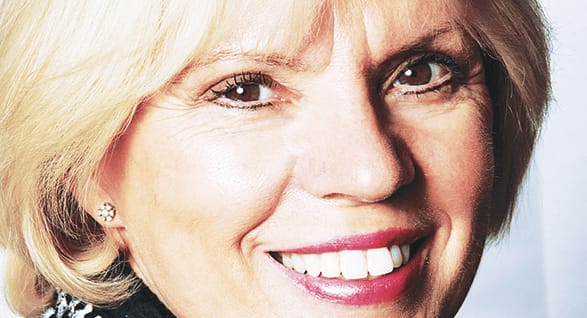
Gender diversity in science, technology, engineering, and math (STEM) fields is a conversation we’ve been having for years. Most people claim to support gender equity, but diversity data doesn’t reflect this notion. To resolve the challenges that hold women back from STEM fields, we need to use an intersectional lens that recognizes how other dimensions of identity affect women’s experiences. It’s time we take a step back to identify what’s still driving the lack of representation – and how we can make tangible improvements.
Unconscious bias is by far the biggest roadblock in increasing the number of women in STEM fields. People know what the issues are and what they’re supposed to do about them, but when the rubber meets the road, people still make prejudiced decisions based on their gut reactions.
Whether that manifests as a hiring manager thinking female candidates’ family goals will interfere with their jobs or a woman being talked over by her male colleagues, this prejudiced behavior can deter women from pursuing STEM jobs. Unless people recognize their unconscious bias and are mindful of its effects, we won’t make any progress.
The most prominent example of this signaling starts at an early age; if girls grow up without seeing women in STEM and leadership roles, it can subconsciously make them feel like they don’t belong in those roles, either. However, when girls see people that represent them in the roles of CFO or vice president, it gives them hope of a successful future that isn’t completely unattainable.
Another key obstacle is that many STEM-related industries don’t have an actionable plan or consequences regarding gender diversity. Many companies aren’t held accountable for lack of representation and fail to diversify their workforce. If a company’s demographics go from 15 percent women one year to 12 percent women the next, what are the ramifications? Who reaps the benefits and who suffers the consequences?
I believe one of the reasons that gender equity continues to be an issue is because we’ve been thinking of gender in monolithic terms, when we should really be thinking about intersectionality. When you look at this issue across other dimensions of identity, it compounds the problem. Your race and socioeconomic background affect your access to education, your political power, and your pay equity. If your parents weren’t in a STEM-related field, you’re much less likely to choose that field yourself. Until we take all aspects of identity into consideration, we will continue to see low representation rates.
If we want to start dismantling the cultural and systemic barriers that hold women back from STEM fields, we need to address the problem as early as possible. It’s imperative that girls of all ages understand that STEM careers are a viable option for them. We need to weave the love of science and math into the things that girls are interested in; sparking the interest of young women and girls, and continuing to nurture that interest throughout their careers. If this ideology is implemented across the world, we can broaden the pipeline of women entering STEM industries.
For example, the Agilent HBCU (Historically Black Colleges and Universities) sponsorship program provides crucial support to historically black institutes. This program ensures that black students have access to high-quality scientific equipment and STEM recruiting opportunities. If these resources are offered to other underfunded schools, we’re likely to see more women from marginalized communities entering STEM fields.
To further push this ideology, we need to hold leaders accountable for upholding diversity. For example, encouraging business leaders to make an active effort to spend company money on diverse vendors or serving as a member or sponsor for underrepresented communities. If leaders aren’t making these active decisions to improve gender equity, there must be consequences to stop this repeating behavior; for example, a negative impact on their ratings, bonus, or another pre-discussed metric. However, this shouldn’t be an exception of performance, which relates to diversity and inclusion.
Another key element includes building awareness for those who aren’t a part of these marginalized communities. By educating our male counterparts and those of other ethnic backgrounds of the barriers in place, we can work at breaking down walls and improving diversity and inclusion in the workplace. Without a diverse network, it is difficult to learn things that you wouldn’t otherwise know. For example, have you ever listened to a woman with a disability talk about the challenges that have presented themselves during her career? To move the dial, we need men to make space for women to speak for themselves – and then to listen and understand their experiences.
Women are not monolithic. The reasons women leave their jobs vary greatly, and we need to slice and dice the data to understand those reasons before taking action to reduce it. In 2020, our data showed that women aren’t willing to sacrifice their home lives for their work lives (1). Allowing women flexibility gives them the autonomy to create their own schedules, letting home life coincide with work.
The quality of interactions at work are also pushing women to leave jobs. Highly educated and experienced professionals are in demand. If women don’t feel supported and empowered by managers or colleagues, they’re willing to find alternative employment without having to make compromises. By creating more welcoming environments for women, people of color, the LGBTQIA+ community, and other marginalized dimensions of identity, we can improve the retention of women overall.
Often, when we talk about diversity and inclusion, it’s as an add-on to the rest of the business, rather than an integrated policy. It needs to be part of the performance expectation and talent management. Diversity doesn’t just happen. It’s reflected by our customers, our partners, and our science. For it to be heard, it has to be purposeful.
Diversity can’t be a one-and-done training. It needs to be experiential and dynamic. It needs to be reflected in what leaders say, do, and think about those involved in their business. It has to be fully integrated; until we do that, it will continue to be a challenge.
References
- Agilent, Diversity and Inclusion Report (2020). Available at: https://rb.gy/arje2




